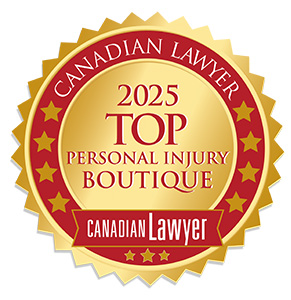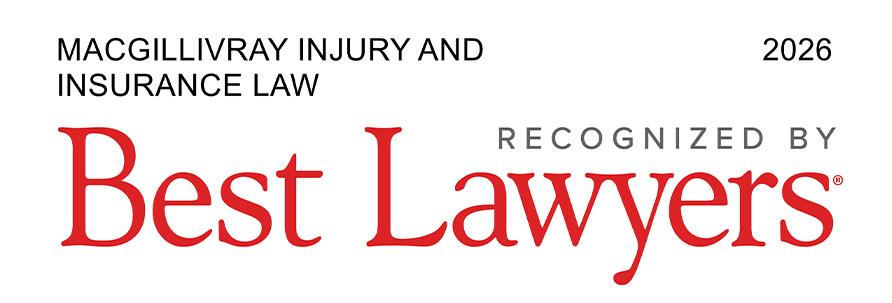



Birth injury litigation involves legal action taken when a medical professional’s or institution’s negligence during the childbirth process leads to harm to the mother, the newborn, or both. These cases are highly complex and emotionally charged, as they often involve severe and long-lasting consequences for the injured party and their family. Because of their complexity, these are some of the biggest medical negligence cases in cost, duration, and reliance on experts.
As highlighted in Robertson & Picard, Legal Liability of Doctors and Hospitals in Canada, 5th edition, obstetrics has three major features that distinguish it from other specialties and justify the highest malpractice insurance fees from the Canadian Medical Protection Agency.
- Urgency – In obstetrics, given how fragile newborns are, emergencies need to be acted on very quickly; as one judge has famously stated: “wasted minutes can have tragic consequences.” (Dudas v. Munro, 1997 BCJ 1997)
- Anticipation – it isn’t enough to respond quickly, a doctor must respond foreseeably. Perhaps most notably, there is a long list of cases surrounding the failure to foresee and prepare for shoulder dystocia.
- Communication – although a pitfall throughout medicinal practice, in obstetrics, communication errors are easier and riskier. When the stakes are this high in emergencies across multi-disciplinary teams, effective communication amongst team members and with the patient may be difficult but can also be critical.
What are the types of harms and damages in birth injury cases?
Birth injuries can range from mild to severe, may not be immediately apparent, and can and unfortunately have lifelong consequences. Some of the more common injuries include:
- Cerebral palsy.
- Brachial plexus injuries.
- Brain damage, including learning disabilities.
- Bone injuries & fractures.
There are many possibilities for errors, including pre-natal care, the three stages of labor (early labor, delivery and placental delivery), and even up to 6 weeks post delivery.
During each of these periods, many different types of medical errors can occur: from drug administration errors, to improper monitoring or investigation, and the improper use of medical devices. In obstetrics, where timing is critical, practitioners can be faulted for acting too soon (impulsively) or having a delayed reaction to concerning features. A long-lasting case was recently concluded through the Supreme Court of Nova Scotia, Bailey v. Young, 2022 NSSC 43, where the defendants were alleged to be negligent in choosing not to intervene on signs of fetal distress quick enough.
Birth injuries can have profound emotional, physical, and financial consequences for the affected child and their family. The cost of medical treatment, therapy, assistive devices, and ongoing care can be significant. Additionally, families may experience emotional distress, pain, and suffering, as well as a loss of quality of life. Birth injury medical malpractice litigation seeks to provide compensation to help alleviate the financial burdens and support the affected child in their lifelong needs.
The standard of care and causation: experts required
To succeed in a birth injury case, the patient’s legal representation must establish a breach in the standard of care, and a causal link between the healthcare provider’s negligence and the harm suffered. Both elements require expert opinion, and many experts are often required for these cases, such as obstetricians, neonatologists, and other relevant specialists who are consulted throughout pregnancy, during delivery, or manage complications post-partum. The experts analyze the medical records, review relevant literature, and testify about whether the defendant’s actions fell below the standard of care and how those actions caused the injury.
An expert’s testimony has to be evaluated for admissibility. The test for doing so was summarized in Suwary v. Librach, 2015 ONSC 2100. The four criteria for the admissibility of expert evidence are:
- Relevance;
- necessity in assisting the trier of fact (the judge or the jury);
- the absence of any exclusionary rule, of which they are several; and
- the expert is a properly qualified expert.
In addition, experts giving evidence owe a duty to the court to remain independent and impartial. They must give evidence borne of their independent analysis and assessment and should not become advocates for the party or the positions of the party by whom they have been retained. It is their duty to provide “fair, objective, and non-partisan” opinion evidence.
To be deemed a qualified expert by the court, experts must be able to match the clinical background of the alleged negligent healthcare provider (defendant), or at the very least address the specific circumstances that the defendant was in. For example, in Miller et al v. Dow et al., 2017 NBQB 35, one of the issues was the availability and use of a tocodynamometer, a device that measures contractions and is used to understand fetal heart-rate variability for distress. The case illustrates two points: the device itself may be a question of the standard, but also the potential for reading the information is another consideration. Failing to sufficiently match or address the specific practice background of the defendant weakens the testimony of the expert.
The expert’s task is not always straightforward. As mentioned above, one of the major issues with birth injury cases is that the harm can present (or worsen) much later than the time of the incident that caused it, which can complicate the testimony of experts weighing in on the standard of care. For example, in the decision KS v. Willox, 2018 ABCA 271, the standard of care was appealed and the experts had to weigh in on whether or not something that occurred nearly 20 years prior to the appeal was considered a “normal reasonable practice.”
Legal complexity
Birth injury cases are not just complicated in the medical sense (such as in respect to causation, and standard of care), but are also very challenging from a legal perspective. One of the primary complexities lies in gathering and presenting the necessary evidence to support the claim. Medical malpractice cases require a thorough understanding of medical standards, procedures, and terminology, making it crucial that your legal representation is diligent in their work throughout the case. Obtaining and analyzing medical records, conducting comprehensive investigations, and identifying relevant experts can be time-consuming and resource-intensive tasks, especially with such complex and long-term cases as birth-injury.
Many examples of how and where things can go wrong are apparent in the case law. In 2017, an Ontario case (Khan v. Lee, 2014 ONSC 1497) was dismissed for lack of sufficiently well-developed pleadings – pleadings is work done before filing a motion for a case with the courts. In that specific instance, the court determined that you cannot apply for a case to be taken against a defendant and then ‘fish’ for information about wrongdoing, reaffirming that serious work must be done ahead of time.
Another recent Ontario case went to the Superior Court and the decision hinged on how to properly explain the question of causation to a jury i.e., whether or not the defendant’s actions caused the harm in question (Uribe v. Tsandelis, 2019 ONSC 7093). Although the court determined that the ‘simple’ framework favored by lawyers was the appropriate test, it was a closely decided and hard-fought issue. In 2018, another case was forced to go to re-trial by order of the Superior Court in Ontario for a similar issue – that the jury was not properly instructed on how to evaluate and determine causation (Cheung v. Samra, 2018 ONSC 3480).
We represent people in birth injury cases
Birth injury cases are typically complex and require diligent work. Our team has both legal and medical experience to guide you through the complexities of birth injury litigation. If you have questions about a possible birth injury case, reach out to our team today for a free consultation.
Have questions for our team?
Frequently Asked Questions
Request a
Free Consultation
If you would like to learn your legal options at no obligation, contact us today to set up a free consultation.
